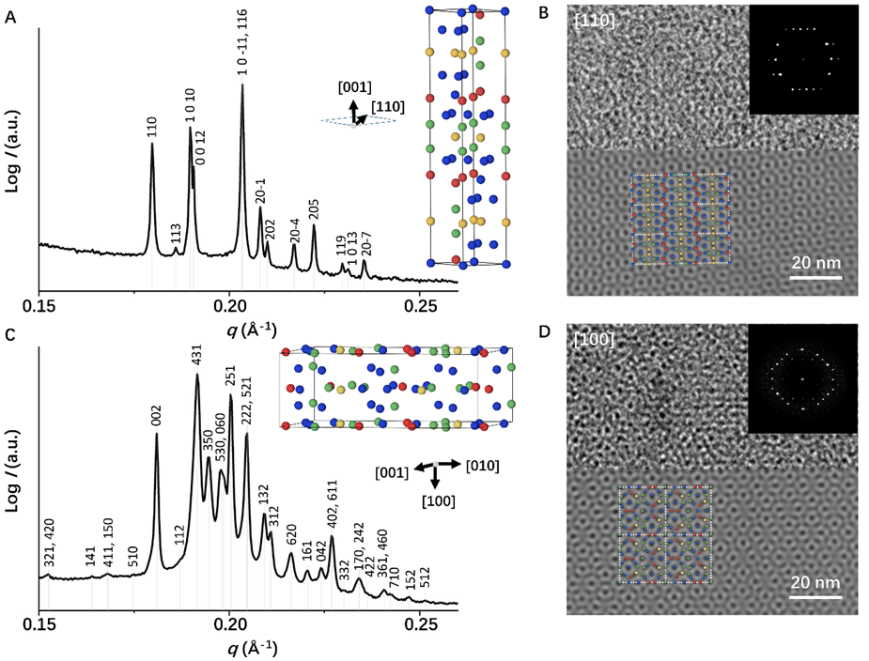From ‘superatoms’, ‘colloidal molecules’, to ‘electron equivalents’, size-magnified analogies to elementary particles have garnered significant interest. It was expected that a spectrum of 'soft alloys' dictated by principles distinct from atomic packing would emerge in soft matter, extending beyond traditional metal alloys. However, despite decades of research, such structures have yet to be observed. Geometries of atoms are given by spherical atomic nuclei, while geometries of mesoatoms could be edited via component molecules. Thus, we emphasize the precise control over the size and shape at the macromolecular level, and our investigation aims to explore how mesoatoms based on neat molecules interplay in a bulk sample.
In this work, we discover two Frank-Kasper phases in the melt of neat molecular pentagon. The two discovered FK phases include the m and the newly named f phases. The m phase, discovered in soft matters for the first time, is an important intermediate phase in many types of superalloys identified in 1935; whereas the f phase is without a metallic prototype. Since the FK phase’s first identification in 1927, this is the first report that undocumented FK phase is discovered in non-metallic system. The structures of two phases are determined synergically with multiple microscopic and scattering characterization technologies as well as full-atomic molecular dynamic simulations. We discovered that geometric frustration caused by five-fold symmetry hinders the molecule exchange among mesoatoms, which leads to largely increased size- and shape-distribution of mesoatoms. These anisotropic mesoatoms in dense packing result in the unique packing phenomenon.
All X-ray diffraction data were recorded at Beamline BL16B1 of the Shanghai Synchrotron Radiation Facility (SSRF).

附件下载:
